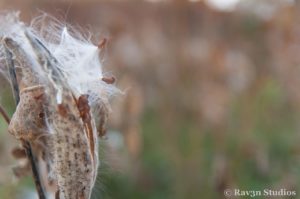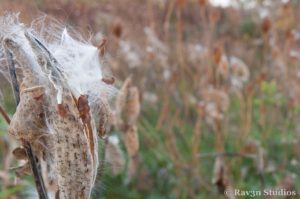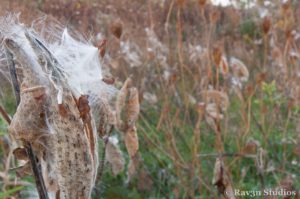You have been shooting your photos in auto mode for far too long. You want to take the plunge and kick those photos up a notch. Where do you start though? Aperture, exposure, ISO, slow lenses, fast lenses, cake or pie? These new ideas start flooding in when you start reading up on how to go beyond auto shooting mode. Take a deep breath and relax.
One of the biggest areas so many photographers deal with is the exposure triangle. This is the correlation of ISO, Aperture, and Exposure. Each of these items plays a major role in your photos, how they look, and influence the overall feel of the shot. Even more complicated is how closely these three items intertwined with one another.
For this article, let’s focus on one aspect of this triangle in aperture. A more common term used for aperture is f-stop. I am not going to go into all the mathematics that comes behind aperture. You math gurus can easily hit up Wikipedia to get your formula geekery on. Let’s get the show started.
Aperture is one of those weird numbers in photography. By weird, I mean the smaller the number the larger the aperture the smaller the depth of field. The first part of this is the smaller number equals a larger aperture.
Here is how this breaks down. Aperture refers to a set of fins on the inside of your lens. These fins control how much light goes through to your camera sensor (or film). A common aperture like f/2.8 means these fins are wide open. This allows a bunch of light through the lens. An aperture of f/11 means these fins are closed down and allow less light through. Therefore, f/2.8 has a wider opening than f/11. f/2.8 allows greater flow of light than f/11. This is why an aperture of 2.8 is larger than f/11.
To put this explanation another way, think of a funnel. On this funnel, you place nine metal flow restrictors with a small opening to allow liquid to pass through. This setup would be an f/9. Now, you pull two of these restrictors off the funnel. The liquid now flows more freely. This would be an f/7. The process continues and you remove everything but two restrictors. This f/2 has a bigger opening and allows more liquid to flow. Therefore, f/9 is a smaller opening allowing less fluid to flow, whereas an f/2 is a larger opening allowing more liquid to flow.
Now that we have an understanding of how light is changed by increasing (making the aperture number smaller) and decreasing (making the aperture number larger) aperture, it is now time to bring in another wrench. Aperture has a direct impact on depth of field as well. Depth of field is how much of the background you see behind your subjects. This is most notable in close-up shots where the subject is in focus while the background is a blur of colors. Think of a picture of a humming bird feeding from a flower while the background is a blur of gorgeous greens and reds from the other flowers not being in focus.
Now, how do the numbers change your depth of field? A larger aperture will cause a shallower depth of field. A smaller aperture will net you a larger depth of field. Even more confusing huh? Here is why this is. When you have an aperture of f2.8, you are allowing a lot of light through the lens at once. This means the sensor in your camera does not have enough time to focus on everything in view before the picture becomes over exposed. In contrast, a smaller aperture allows less light though, thusly allowing the camera sensor to take in all there is to see.
A great example is filling a glass of water. You can take a gallon jug and just dump the water (photo details) into a glass (camera sensor). Doing so will fill the glass, but water will also get on the sides of the glass, or even worse it will get on your counter. Alternatively, the photo details are thrown all over the place and the camera sensor only captures so much. This example would be an aperture of f/2.8.
To contrast this, you can take the same gallon jug and use a funnel to ensure all the water gets into the glass. This process ensures the water ends up in the glass and not on the counter. Alternatively, all the photo details end up on the camera sensor. This would be an example of f/11.
Now how do you use these two pieces aperture together? The first thing you need to ask is what your shooting conditions are. The second question will be what you want the focus of your photo to be. Knowing the answer to these two questions will allow you to set an aperture to produce an image you want.
Let’s look at a few examples. You are shooting in a low light situation. This can play all kinds of evil tricks on that blur effect. Setting a larger aperture like f/2.8 or f/4 will allow a greater penetration of light through the lens. This will result in less blurry subjects.
Example 2 comes in a nature photo. You are walking around and notice a spectacular rose. This rose is up against a house that is not so interesting. You want the rose in full focus, but you could care less about the background. Here the largest aperture you can attain will help blur out that nasty background. You will need to be close to your subject.
Example 3 will be a fountain with a fantastic cityscape for the background. You decide that the fountain is a great contrast to the city. You want everything to be in focus when you capture this shot. Therefore, you need to trickle the light into the camera sensor so the camera has time to grab all those details before the photo becomes over exposed. A smaller aperture is key for this type of shot. An aperture like f/20 might be right up your alley.
There you have it, the long, and short of how aperture works in photography. Why not head out this weekend and shoot in Aperture Priority mode to see how this setting influences your photos. Aperture Priority is often designated by an A of some time on your camera settings. Take a notebook and document your settings as you go. The most important item to keep in mind is to have fun while you learn!
Here are three examples of how Aperture changes your photos. These were all shot in Aperture Priority Mode. Take note of the how the background, shutter speed, and aperture change between all three shots:

Aperture: f/2.8
Shutter: 1/180
ISO: 200
White Balance: Auto

Aperture: f/11
Shutter: 1/10
ISO: 200
White Balance: Auto

Aperture: f/22
Shutter: 1/3
ISO: 200
White Balance: Auto
*The Current Photographer website contains links to our affiliate partners. Purchasing products and services through these links helps support our efforts to bring you the quality information you love and there’s no additional cost to you.
This is where you would expect me to tell you about my life, how awesome I am, or why I am so superior to other people in this line of business. I would enjoy telling you how I have wrestled grizzly bears 10 feet tall. Maybe you would like hearing how I have taken on Velociraptors in my days as a young man. Even better is the story how I have traveled to the furthest reaches of space to stop catastrophic alien invasions. The problem will be that you might not believe my awesome stories.
I will keep these awesome stories for the campfire though. I’m just a man, taking pictures, trying to make a living. I ditched my education in computers in favor of pursuing my passion for photography. I enjoy a good cold beer on a warm day. I have a fondness of the outdoors.. I have enjoyed years capturing life’s unscripted moments. Hopefully, I can enjoy many more years of slacking off without fear of those grizzlies taking me out before my time.
My Philosophy is to capture those non-scripted moments. To capture the little details that this world really has to offer. From weddings to insects, I enjoy capturing the life, the details, and the moments that come and go in a flash.
RT @TrevorCurrent: Photography 101: Aperture And You. Learn about exposure and depth-of-field. https://currentphotographer.com/photograp… #photog #togs
RT @TrevorCurrent Photography 101 Aperture And You. Learn about exposure and depth-of-field. https://currentphotographer.com/photograp… #photog
RT @TrevorCurrent: Photography 101: Aperture And You. Learn about exposure and depth-of-field. https://currentphotographer.com/photograp… #photog #togs
RT @TrevorCurrent: Photography 101: Aperture And You. Learn about exposure and depth-of-field. https://currentphotographer.com/photograp… #photog #togs
RT @TrevorCurrent: Photography 101: Aperture And You. Learn about exposure and depth-of-field. https://currentphotographer.com/photograp… #photog #togs
RT @TrevorCurrent: Photography 101: Aperture And You. Learn about exposure and depth-of-field. https://currentphotographer.com/photograp… #photog #togs
RT @TrevorCurrent: Photography 101: Aperture And You. Learn about exposure and depth-of-field. https://currentphotographer.com/photograp… #photog #togs
RT @TrevorCurrent: Photography 101: Aperture And You. Learn about exposure and depth-of-field. https://currentphotographer.com/photograp… #photog #togs
RT @TrevorCurrent: Photography 101: Aperture And You. Learn about exposure and depth-of-field. https://currentphotographer.com/photograp… #photog #togs
RT @TrevorCurrent: Photography 101: Aperture And You. Learn about exposure and depth-of-field. https://currentphotographer.com/photograp… #photog #togs